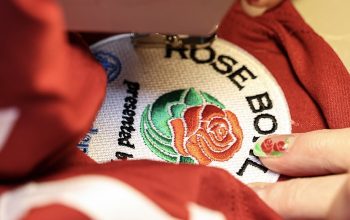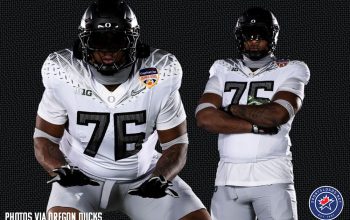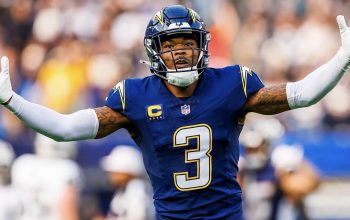
The Washington Redskins are, following some significant corporate pressure, reportedly considering a name change. This is a frequently debated topic with each side deep in their respective corners — either you want to keep the name and preserve the history of the team, or you feel the name is offensive and that a new name is long overdue. There’s also disagreement within each camp about whether to keep the logo or change the logo.
What I want to do with this post is just to dig into the history of this name and the logo — explore some of the common reasons that I frequently hear from both those in favour of keeping the Redskins name and those who want the team to change it — and quite simply provide some facts and such behind each to maybe help clear things up.
Is “Redskin” an Offensive Word?
Natives first used the term during the 18th Century as a way to refer to themselves in contrast to the “white-skinned” European settlers. For quite some time, the term “red-skin” was used by both whites and Natives in a respectful, non-offensive manner.
By the second half of the 19th Century, however, “red-skin” was used with increasingly negative connotations. A newspaper announcement promised $200 from the government “for every red-skin sent to purgatory” in 1863. From the 1870s to the 1890s, the term was clearly the go-to phrase in newspapers to describe Natives whenever something negative happened, whether in news reports or fictional short stories. Essentially it was now a word used exclusively to slur Native Americans. The 1898 Webster Dictionary refers to the word as “often contemptuous,” various editions of the Random House Dictionary throughout the 20th Century either preface the definition with “often offensive” or “often disparaging”.

In 1999, after seven years of litigation, the United States Patent and Trademark Organization (USPTO) decided that trademarks using the term “Redskins” were “disparaging to Native Americans when registered” and ordered six trademarks using the word to be cancelled. This decision was reversed on appeal in 2003. In 2014, the same six trademarks were again cancelled by the USPTO, using testimony from several Native Americans to make their decision on whether the word is considered offensive to the Native people. Again appealed; this time, the ruling survived, but the decision was effectively turned over following a separate case regarding offensive trademarks by the Supreme Court in 2017.
Were the Redskins Named in Honour of Natives on the Team?
The Redskins adopted their current team name 87 years ago today — on July 5, 1933. The NFL’s Boston Braves announced on that date that they would henceforth be known as the Boston Redskins.
Many have said that Redskins owner George Marshall changed the name of his Boston Braves football team to the Boston Redskins in honour of the team’s Native American head coach, “Lone Star” Dietz. In reality, Marshall was more concerned about sharing the name Braves with the local baseball club.

“So much confusion has been caused by our football team wearing the same name as the National League baseball club that a change appeared to be absolutely necessary”, Marshall told the Associated Press at the time. “The fact that we have in our head coach Lone Star Dietz, an Indian, together with several Indian players, has not, as may be suspected, inspired me to select the name Redskins.”
Two weeks later, Marshall discussed the name change again, this time sharing some of the marketing ideas he has with the new name and his Native coach and players.
“Besides my coach, I’ve got half a dozen Indian players signed up [on the Redskins]”, Marshall said, “and I’m going to have them wearing Indian war bonnets and blankets and everything.”

Despite evidence to the contrary, the Washington Redskins were still claiming the name was meant as an honour, responding to calls to change the name in 2003 by releasing a statement to the media saying that they “do not intend to change the name” because the team believed “it’s an honourable use”.
Why are Natives suddenly complaining about this now?
They aren’t; it’s just a little easier to hear their voices now, thanks to the advent of the Internet and social media.
In 1972, several Native American leaders met with Edward Williams, president of the Redskins, in an effort to get the team to change the words to their “Hail to the Redskins” fight song, which up until then had contained lyrics such as “scalp ‘um, swamp ‘um, we will take ‘um big score!”. The meeting was a success, and the lyrics were amended.
The National Congress of American Indians “demanded” the Redskins change their name way back in 1988. They said back then that the term was “degrading and insulting”. This was 32 years ago. Of the 70+ players currently listed on the Washington Redskins roster, only three had been born when this demand was made.
In 1990, the president of the American Indian Bible College asked NFL commissioner Paul Tagliabue “If the NFL were really motivated by ethnic concerns, why would they have a team called the Redskins?”. This was in reference to the recent revoking of the Super Bowl by Tagliabue from Phoenix after Arizona voters turned down a holiday for Martin Luther King, Jr.

The next fall, there were Native American protests at the 1991 World Series which featured baseball’s Atlanta Braves. One protestor holding a sign that read “Indians are people” and “We deserve respect” was reportedly spat on and attacked by a Braves fan wearing a headdress during Game 5 of that ’91 series.
The following January, the Redskins made the Super Bowl, which again led to more Native American protests.
Redskins owner Jack Kent Cooke, who was also the original owner of the Los Angeles Kings and gave the L.A. Lakers their famous (Forum Blue) purple-and-gold colour scheme, said in 1992 that the name “Redskins will not be changed. To me, the name represents pride, courage, adventure, derring-do and bravery.”
Shortly after Super Bowl XXVI, the Portland Oregonian newspaper banned the use of Indians, Redskins, Redmen, and Braves in its sports section. The Sporting News said it was considering the same.
“I think if people in the Native American/Indian group say that it’s offensive, then there is no discussion. It’s offensive,” said Sporting News editor John Rawlings in the Summer of 1992. “And it seems ludicrous to me that anyone would try to argue otherwise on their behalf.”
Later that year, the first case requesting the cancellation of six Redskins-related trademarks was filed to the USPTO.
In 2013, a few months after team owner Dan Snyder said he’d “NEVER (emphasis his) change the name”, U.S. President Barack Obama weighed in, saying he’d personally “think about changing [the name]” if he hypothetically owned a team “with a name that offended a sizable group of people”. Not long after that, the Redskins hired a PR firm to launch a website defending the name of the team. “We believe the Redskins name deserves to stay,” read the site. “It epitomizes all the noble qualities we admire about Native Americans – the same intangibles we expect from Washington’s gridiron heroes on game day. Honour. Loyalty. Unity. Respect. Courage. And more.”
Do Native Americans Actually Like the Name?
As with anything, there’s no unanimous consensus.
During a 1977 Washington Redskins home game, a halftime show was put on by the Bureau of Indian Affairs, which featured scores of Native American tribes performing in the All-Indian Half-Time Marching Band and Pageant.
Kansas City Chiefs owner Lamar Hunt used Native American support as his reason for not changing the name of his team back in the 1990s, saying, “I can show you many, many letters from the Indian community that support [the name Chiefs]. It’s a name that implies leadership. We think it’s emblematic of leadership and the colourful heritage of the area.”
Two decades later, a Washington Post poll conducted in 2016 concluded that 90% of the 504 self-identified Native Americans asked were “not bothered” by the team using the name Redskins. Four years later, in 2020, a UC Berkeley study found that the number of those unbothered had dropped to 50%.

While the numbers on that 2016 survey are high, there have certainly been numerous protests led by Native American leaders over the past 30+ years against the name not just at Redskins games but also against the Atlanta Braves and the Cleveland Indians. There is clearly some passionate opposition to it.
“The fact that a football team in the nation’s capital could be named the Redskins in this day and age shows how pathetically ignorant this country is”, said Charlene Teters of the Spokane Indian nation to the Philadelphia Daily News in January 1992. “I’ve had some tell me the team is honouring the Indian people by using that name. I said there are better ways to honour the Indian people. They could start listening to what the Indian people have to say. We don’t want to be portrayed as mascots and cartoon characters.”
If Redskins Have to Change, What About the Fighting Irish?
The origin of the Notre Dame Fighting Irish name is ultimately unknown. The university itself offers several different possibilities for where this name came from but notes one of those stories as more likely than the others:
The most generally accepted explanation is that the press coined the nickname as a characterization of Notre Dame athletic teams, their never-say-die fighting spirit and the Irish qualities of grit, determination and tenacity. The term likely began as an abusive expression tauntingly directed toward the athletes from the small, private, Catholic institution. Notre Dame alumnus Francis Wallace popularized it in his New York Daily News columns in the 1920s.
Notre Fame Fighting Irish (und.com)
Another theory is that they were named for Father William Corby, a two-time president of the university, who attended the Battle of Gettysburg, serving as chaplain of the Irish Brigade in 1863. Corby was born in Detroit to an Irish immigrant father. The university makes no reference to this possible origin on its official site.
We go back again to 1992 to hear from Tim Giago of the Lakota Times, who tells the Santa Rosa Press Democrat, “The difference is that the ‘Fighting Irish’ were named from the inside. We weren’t given that opportunity. Maybe this [practice] was an honour 100 years ago, but the world has changed since then.”
There’s also another “slippery slope” argument often used that if you change “Redskins” or “Indians”, now you’ll have to cave to Animal Rights groups and get rid of names like Tigers, Lions, and Bears…
“We don’t appreciate being included in with lions, tigers, bears, eagles and other animals,” said Vernon Bellecourt, co-founder of the American Indian Movement in 1992. “It’s an attack directly at your self-esteem.”
Was the Redskins Logo Designed by a Native American?
Yes, it was. Walter “Blackie” Wetzel, who was the chairman of the Blackfeet Nation and president of the National Congress of American Indians, had the idea to put the head of a Native American chief on the Redskins helmets in 1971.
In a 2003 article printed in the Helena Independent-Record just one week before his death, he’s quoted regarding the origins of the logo.
“Back then, there was only the letter ‘R’ on the helmet, so I requested a few pictures to be sent down from my reservation of Indian chiefs”, Wetzel said, also recalling he visited the team offices telling the team, “I came here to see you guys about seeing a real Indian on the helmets.”

The article said Wetzel was “really proud – and has [felt that way] ever since – seeing the Indian chief on the helmet”, adding that he “felt good” that the team had [in 2003] decided to keep the name and logo.
Wetzel led a fascinating life; in addition to the accomplishments above, he “fought hard against policies that would terminate tribal governments”, “fought for employment, aid, and the development of tribes’ land and minerals,” and also worked with U.S. Presidents John F. Kennedy and Lyndon B. Johnson.
Several years after Wetzel died, his son Lance was asked by 406MTSports.com regarding the controversies about the logo.
“I took my dad’s word that this was a big-time logo representing our people,” Lance said. “You look at the logo and Blackfeet history, and they are considered powerful people. I identify and connect with the logo that way.”
“I can see both sides of the story. The way I see it, this opens the door to a great education for people to learn about the history of tribal people. I know my dad said the logo wasn’t chosen in a derogatory kind of way.”
I hope this post has helped answer some questions; I know I certainly learned quite a few things while researching this. Did I inadvertently miss something important here? If so, please use our contact form or send me a Tweet to let me know, and I’ll take a look.
UPDATE: The Washington Redskins temporarily dropped Redskins from their name and played simply as the “Washington Football Team” shortly after this post was first published. Two years later, in 2022, they announced they would be known as the Washington Commanders.










